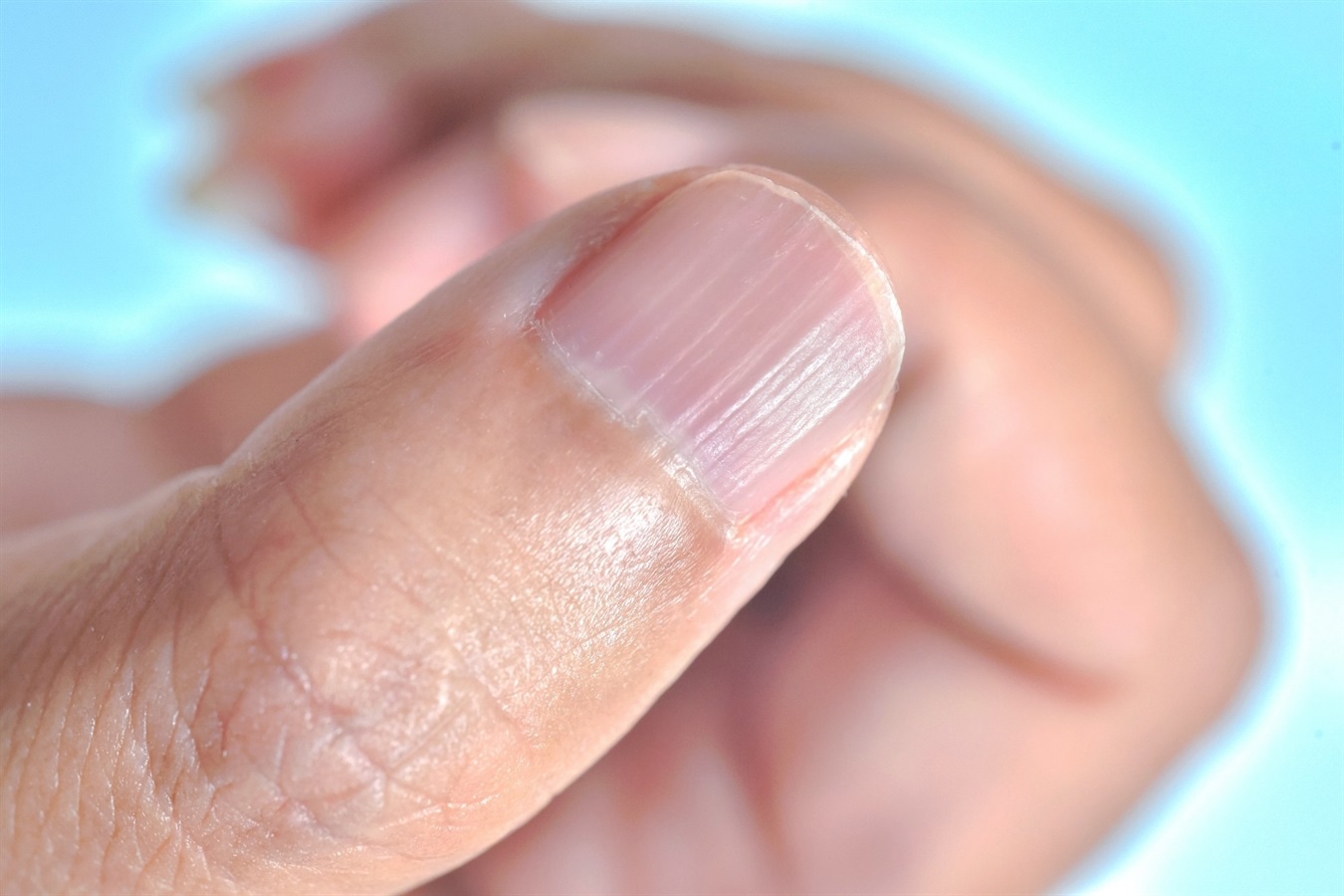What are the symptoms of ridges in nails?
Ridges in nails, also known as “nail ridging,” can appear as either vertical or horizontal lines across the nail surface. Vertical ridges are often fine, raised lines that run from the cuticle to the tip of the nail. They can create a subtle texture change, making the nail feel less smooth. Vertical ridges are commonly associated with aging and may be considered a normal part of the aging process. In some cases, they may indicate a lack of certain nutrients, such as vitamins or minerals.
Horizontal ridges, also known as Beau’s lines, are deeper grooves or indentations that run across the nail from side to side. These ridges often signify an interruption in nail growth, which can be due to illness, trauma, or systemic health issues. Horizontal ridges can be associated with underlying health conditions like uncontrolled diabetes, circulatory problems, or severe illnesses that affect the body’s metabolism. Nail trauma, such as injury to the nail matrix, can also cause horizontal ridges.
In some instances, ridges may be accompanied by changes in nail color, such as yellowing, whitening, or darkening, depending on the underlying cause. The nails may become more brittle or prone to breaking, particularly if the ridges are related to nutritional deficiencies or other systemic issues. Additionally, ridges can alter the smoothness and natural shine of the nails, making them appear duller or uneven.
If ridges in nails are accompanied by other symptoms like changes in nail color, pain, or swelling, it may indicate an underlying health condition that requires medical evaluation.
What are the causes of ridges in nails?
Ridges in nails can be caused by various factors, including natural aging, underlying health conditions, and external factors. Here are some common causes:
- Aging: As people age, vertical ridges in nails often develop as a normal part of the aging process. This is due to changes in cell turnover within the nail matrix, which slows down with age.
- Nutritional Deficiencies: Deficiencies in certain vitamins and minerals, such as vitamin B12, iron, and zinc, can lead to the development of ridges in the nails. For example, iron deficiency anemia is commonly associated with vertical ridges.
- Trauma or Injury: Physical trauma to the nail matrix (the area where new nail cells are produced) can cause horizontal ridges or Beau’s lines. These ridges may appear as the nail grows out after the injury.
- Systemic Illness: Horizontal ridges can be a sign of an interruption in nail growth due to systemic illnesses. Conditions like severe infections, uncontrolled diabetes, high fever, or other metabolic disturbances can lead to the formation of these ridges.
- Skin Conditions: Conditions such as eczema or psoriasis can affect the nails and lead to ridging, pitting, or other nail abnormalities.
- Autoimmune Diseases: Autoimmune diseases like rheumatoid arthritis or lupus can cause changes in the nails, including the development of ridges.
- Circulatory Problems: Poor circulation, especially in the extremities, can affect nail health and lead to the formation of ridges.
- Thyroid Disorders: Hypothyroidism and hyperthyroidism can both cause changes in the nails, including ridging.
- Medications or Medical Treatments: Certain medications, such as chemotherapy drugs, can affect nail growth and lead to ridges. Similarly, severe physical or emotional stress can temporarily halt nail growth, leading to horizontal ridges.
- Dehydration of the Nail Plate: Lack of moisture or frequent exposure to harsh chemicals can cause the nails to become dry and brittle, which may result in vertical ridges.
- Genetics: Some people may be genetically predisposed to developing ridges in their nails, especially as they age.
If ridges in nails are persistent or accompanied by other symptoms, such as changes in nail color or texture, it may be important to seek medical advice to rule out underlying health conditions.
What is the treatment for ridges in nails?
Treatment for ridges in nails involves addressing the underlying cause and maintaining good nail care. First, maintaining good nail hygiene is essential. Keeping nails clean and dry, along with regular moisturizing of the nails and cuticles, can help prevent dryness that may lead to ridges.
If ridges are due to nutritional deficiencies, ensuring a balanced diet rich in vitamins and minerals like vitamin B12, iron, zinc, and biotin is crucial. Supplements may be recommended if a deficiency is confirmed. Managing underlying health conditions, such as eczema, psoriasis, or thyroid disorders, is also important. Treating these conditions may improve the appearance of your nails.
Protecting nails from trauma by avoiding harsh chemicals and excessive water exposure is advised. Wearing gloves during tasks like cleaning or gardening can protect nails from damage. Using mild nail care products, such as acetone-free nail polish removers, can prevent further dryness or damage.
If ridges persist or are associated with other symptoms, consulting a dermatologist or healthcare provider is recommended. They can evaluate your condition and suggest specific treatments based on the cause. This might include topical treatments, medications, or addressing any underlying systemic conditions. Gentle nail buffing can help smooth out ridges on the nail surface, but it should be done cautiously to avoid thinning the nails.
If ridges are due to a fungal infection or another nail infection, prompt treatment with antifungal or antibacterial medication will be necessary. Lastly, a professional manicure can improve the appearance of nails temporarily, but it’s important to ensure that the salon follows proper hygiene practices to avoid infections. Addressing the root cause is key to long-term improvement, so seeking medical advice if the ridges are concerning or persistent is recommended.

Leave a Reply
You must be logged in to post a comment.